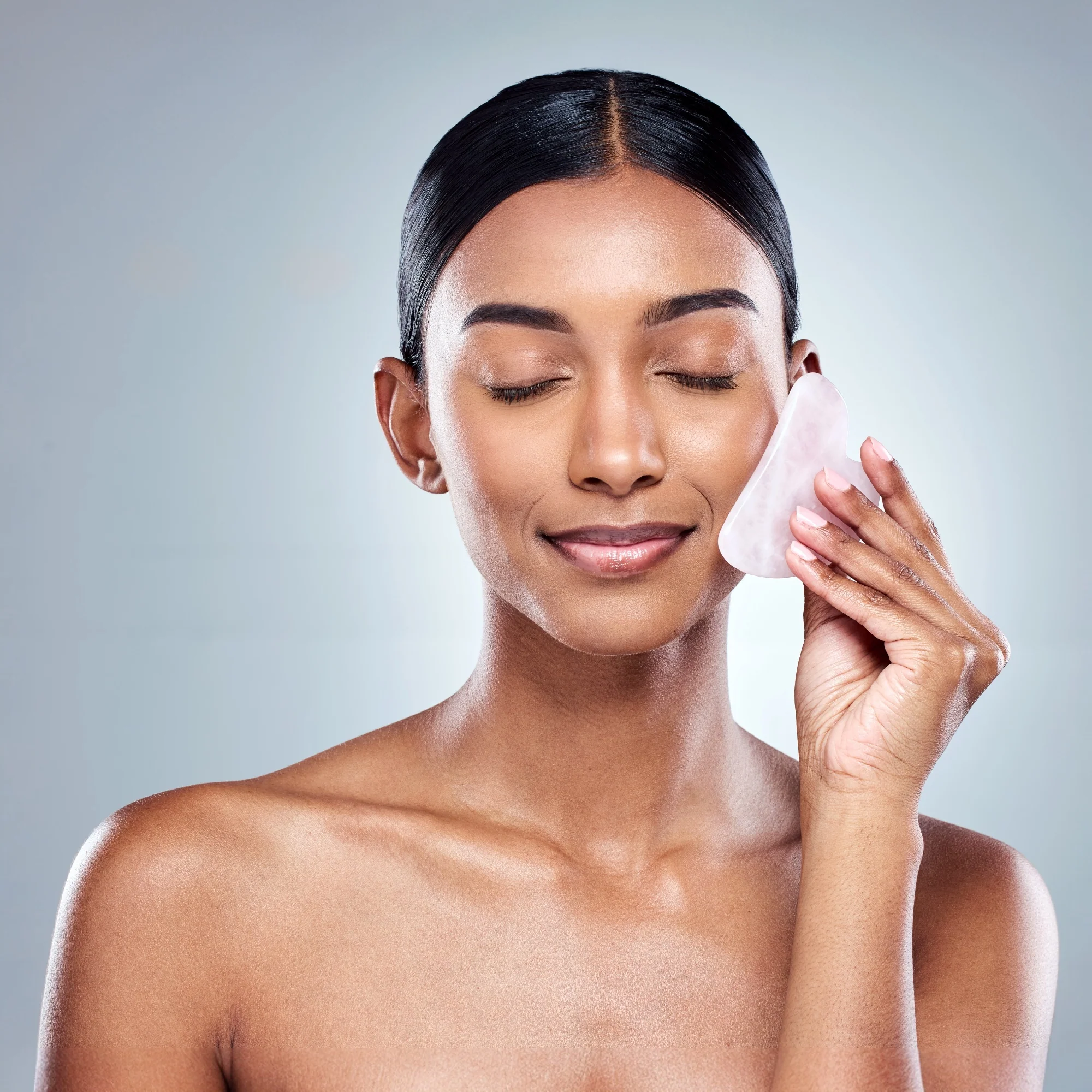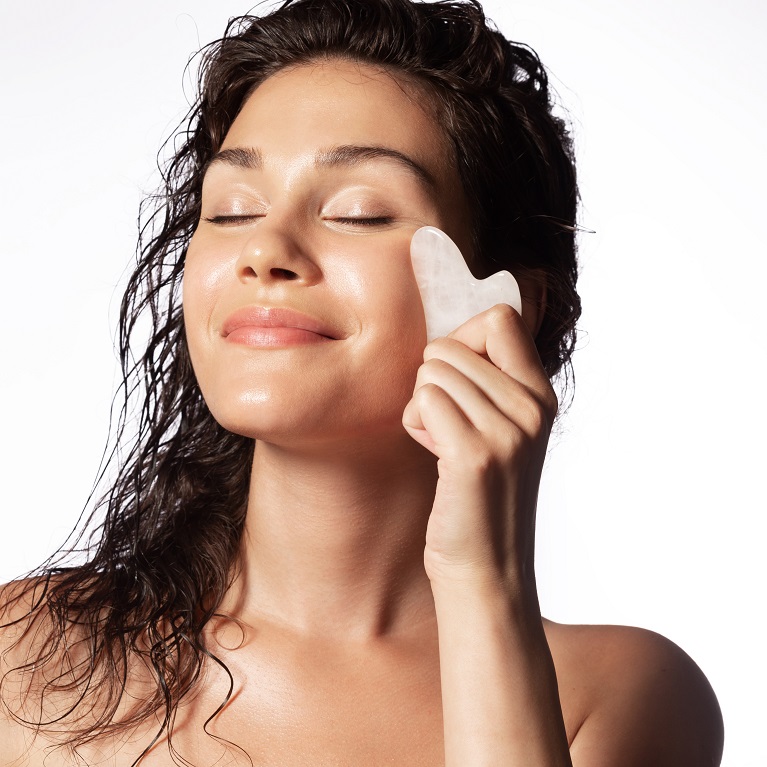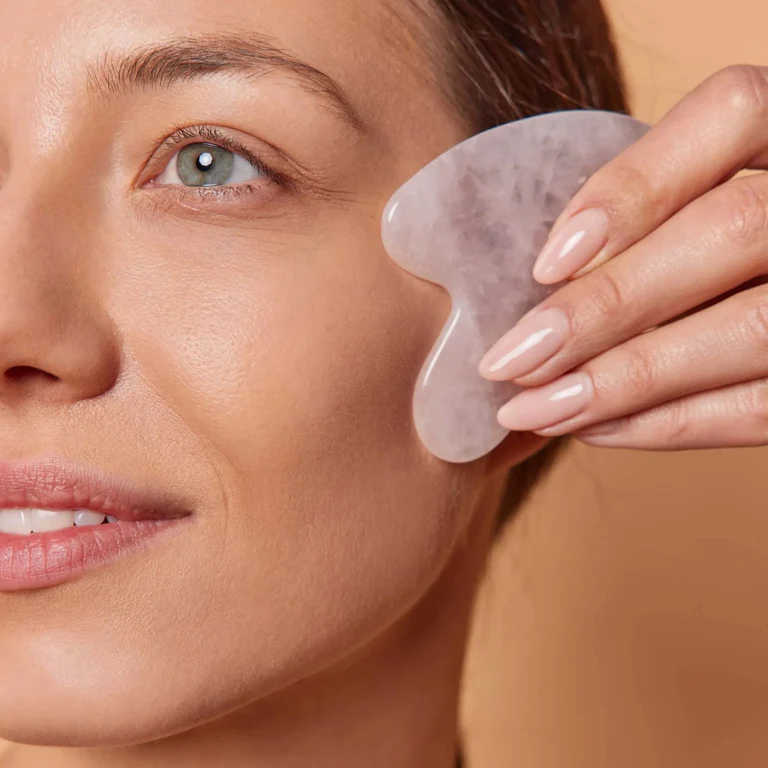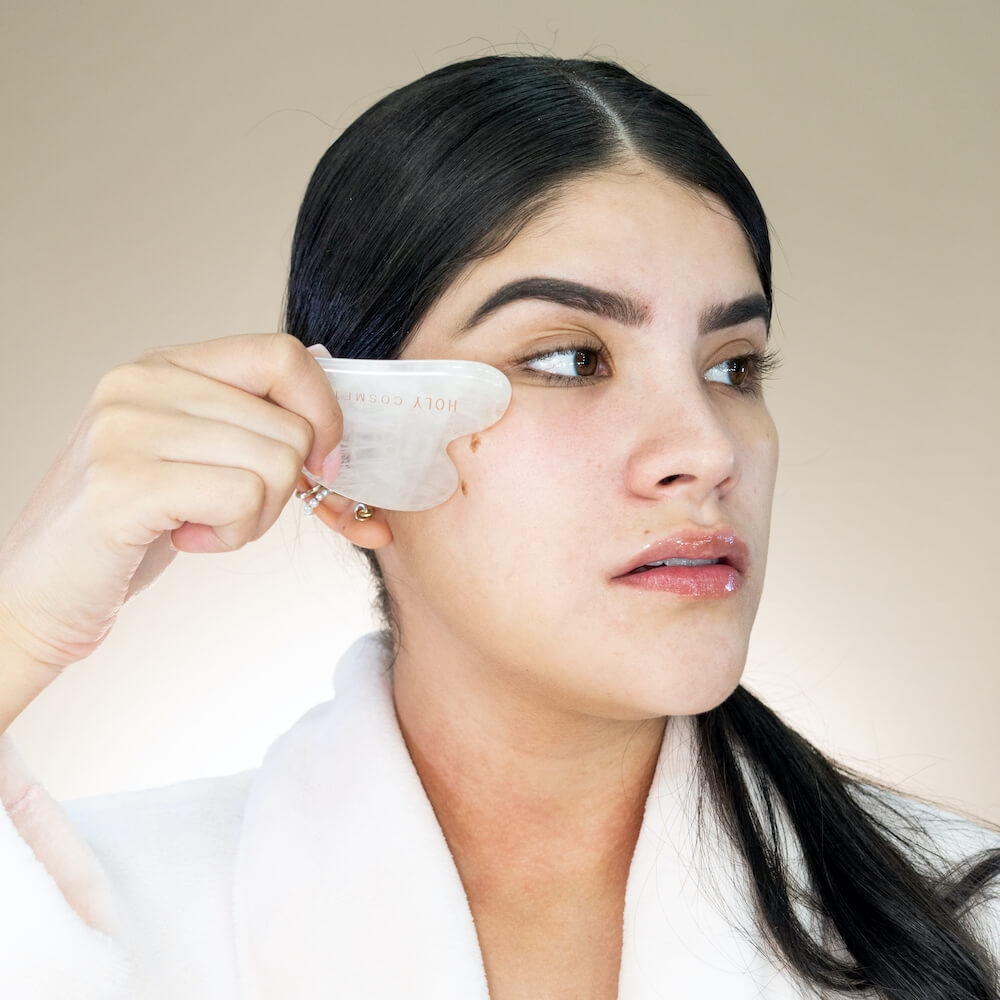What Is Gua Sha and How Does It Work?
Guasha has gained popularity as a skincare technique. This ancient Chinese practice involves scraping the skin with a smooth tool. The tool stimulates blood flow and lymphatic drainage. Practitioners claim it reduces puffiness and promotes a healthy glow. Guasha tools come in various shapes and materials. Jade guasha tool and rose quartz are common choices. The gentle scraping motion helps release tension in facial muscles. Many users report a more sculpted appearance after regular use.Enhance your skincare routine with a specialized Guasha tool for the face, promoting circulation and rejuvenating your complexion.
The Benefits of Facial Gua Sha
Facial guasha offers numerous potential benefits. It may help reduce the appearance of fine lines and wrinkles. The technique can improve skin elasticity and firmness. Guasha promotes circulation, bringing oxygen and nutrients to skin cells. This increased blood flow can give the complexion a natural, healthy radiance. The practice may also help relieve tension headaches and jaw pain. Some users find guasha helpful for sinus congestion. Regular use can lead to a more defined facial contour.
Proper skin preparation ensures optimal results from guasha. Start with a clean, makeup-free face. Apply a facial oil or serum to create slip for the tool. This prevents tugging or irritation of the skin. Choose products with nourishing ingredients like jojoba or argan oil. Avoid heavy creams that may clog pores during treatment. Gentle cleansing opens pores and removes impurities. This allows for better absorption of skincare products during gua sha. Take a few deep breaths to relax before beginning the practice.
Choosing the Right Guasha Tool
Selecting the right guasha tool for face is crucial for effective treatment. Tools come in various shapes to target different facial areas. Heart-shaped tools work well for larger surfaces like cheeks. Pointed ends help access smaller areas around the eyes and nose. Material choice affects the tool’s properties and benefits. Jade remains cool during use, making it ideal for reducing puffiness. Rose quartz retains heat, promoting deeper muscle relaxation. Stainless steel provides a smooth, hygienic option. Consider personal preferences and skin needs when selecting a tool.
Step-by-Step Guasha Technique
Mastering guasha technique takes practice and patience. Hold the tool at a 15-degree angle to the skin. Apply gentle pressure and glide the tool upward and outward. Start at the neck and work up towards the face. Use long, sweeping strokes along the jawline and cheeks. Shorter, lighter strokes work best around delicate eye areas. Focus on upward motions to counteract the effects of gravity. Repeat each stroke 3-5 times before moving to the next area. The entire process should take about 5-10 minutes. Be gentle and listen to your skin’s response.
Consistency is key when adding guasha to a skincare regimen. Start with 2-3 sessions per week and gradually increase frequency. Many practitioners recommend daily use for best results. Perform gua sha in the morning to reduce puffiness and boost circulation. Evening sessions can help relax facial muscles and promote lymphatic drainage. Always follow gua sha with a hydrating moisturizer or facial oil. This locks in benefits and nourishes the skin. Clean the tool after each use with soap and water. Allow it to air dry completely before storing.
Potential Risks and Precautions
While generally safe, guasha requires some precautions. Avoid using the technique on broken skin or active acne. Those with sensitive skin should start slowly and watch for any adverse reactions. Excessive pressure can cause bruising or skin damage. Always err on the side of gentleness. Consult a healthcare provider before starting gua sha if you have any skin conditions. Pregnant women should avoid certain facial areas. Stop use immediately if you experience pain or discomfort. Clean tools regularly to prevent bacterial growth and skin infections.
The Science Behind Guasha
Research on guasha’s effectiveness continues to grow. Studies suggest the technique can improve microcirculation in the skin. This increased blood flow may contribute to a brighter complexion. Some research indicates gua sha can help reduce inflammation. This could explain its potential benefits for acne and rosacea sufferers. The practice may also stimulate collagen production. Collagen plays a crucial role in skin elasticity and firmness. While more studies are needed, initial results appear promising.
Guasha vs. Other Facial Massage Techniques
Guasha differs from other facial massage methods in several ways. It uses a tool rather than just fingers or hands. This allows for more precise pressure and targeted treatment. Guasha focuses on upward and outward strokes. This contrasts with circular motions used in many massage techniques. The scraping motion of gua sha may provide deeper tissue stimulation. Facial rollers offer similar benefits but with less control over pressure. Gua sha tools can access smaller facial areas more easily than rollers.
Guasha complements many other skincare practices. Use it after applying serums or essences to enhance absorption. The technique pairs well with sheet masks for an extra hydration boost. Incorporate gua sha into a lymphatic drainage routine for maximum de-puffing effects. Some practitioners combine gua sha with acupressure for added benefits. The practice can enhance the effects of facial exercises and yoga. Always perform gua sha on clean, product-free skin when combining treatments.
Customizing Gua Sha for Different Skin Types
Guasha can benefit all skin types with proper customization. Oily skin may require lighter pressure to avoid stimulating oil production. Use cooling jade tools on acne-prone skin to reduce inflammation. Dry skin benefits from extra facial oil during guasha sessions. Mature skin responds well to firmer pressure along jawlines and cheekbones. Those with sensitive skin should start with very gentle strokes. Combination skin may need different techniques for various facial zones. Adjust your approach based on how your skin reacts to treatment.
Guasha boasts a rich history in traditional Chinese medicine. The practice dates back thousands of years. Originally, it involved scraping the body to release toxins. Facial gua sha evolved as a gentler variation of this technique. The treatment aligns with traditional Chinese beliefs about qi energy flow. Many cultures have similar practices using various tools and methods. Gua sha’s recent popularity in Western skincare represents a cultural exchange. Understanding its origins adds depth to the practice for many users.
Creating DIY guasha tool for face offers a budget-friendly alternative. Smooth stones or crystals can work as improvised tools. Ensure any homemade tools have no sharp edges. Clean and sanitize DIY tools thoroughly before use. Some practitioners use the edge of a ceramic soup spoon. This mimics the shape of traditional guasha tool for face . Experiment with different household items to find what works best. Always prioritize safety and hygiene when creating DIY tools.

Guasha for Specific Skin Concerns
Guasha can target various skin issues with specific techniques. For under-eye circles, use light, outward strokes with a cool tool. Combat forehead wrinkles with upward strokes from the brows to the hairline. Address double chins with firm, upward strokes along the jawline. Smile lines respond well to outward strokes from the nose to ears. Use gentle, circular motions around the mouth for lip lines. Tailor pressure and stroke direction to each area’s needs. Consistency is key when targeting specific concerns.
Professional guasha treatments offer several advantages. Trained practitioners have in-depth knowledge of facial anatomy. They can customize techniques for individual needs. Professional treatments often incorporate high-quality tools and products. The spa environment promotes relaxation, enhancing overall benefits. At-home practice allows for more frequent treatments. It proves more cost-effective in the long run. Home users can adjust techniques based on daily skin conditions. Both approaches have merits, and many combine professional and at-home treatments.
Guasha and Traditional Chinese Medicine Principles
Guasha aligns with several traditional Chinese medicine (TCM) concepts. The practice aims to balance qi, or life force energy. TCM views facial features as reflections of internal organ health. Guasha techniques target specific facial areas linked to various organs. The treatment is believed to clear heat and toxins from the body. It may help balance yin and yang energies within the skin. Understanding these principles can deepen one’s gua sha practice. Many practitioners combine gua sha with other TCM techniques for holistic benefits.
Measuring and Tracking Gua Sha Results
Documenting guasha progress helps assess its effectiveness. Take before and after photos under consistent lighting. Measure key facial areas like jawline definition monthly. Keep a journal noting skin texture and tone changes. Track any improvements in puffiness or under-eye circles. Note changes in the frequency of breakouts or skin sensitivity. Pay attention to how your skin feels immediately after treatments. Long-term benefits may take weeks or months to become visible. Be patient and consistent for the best results.


